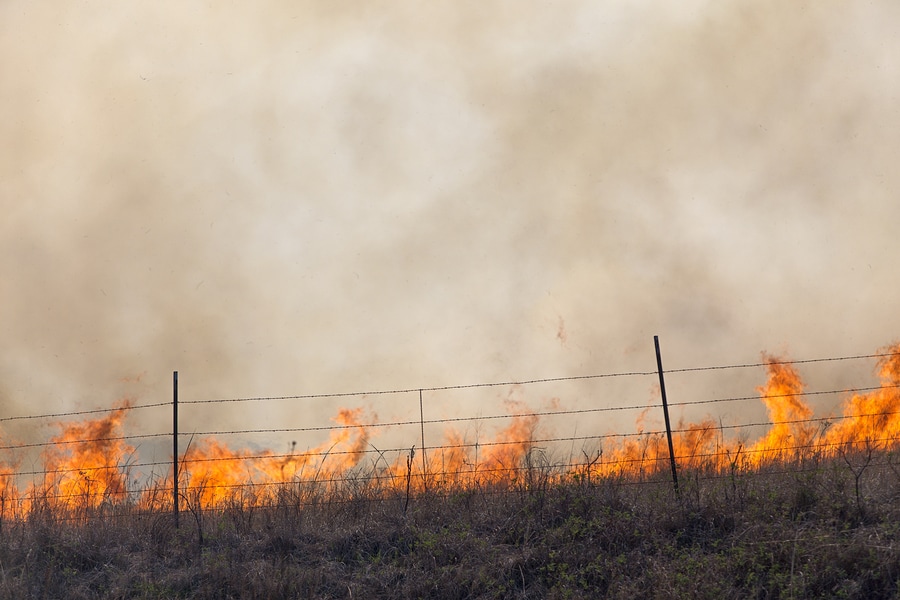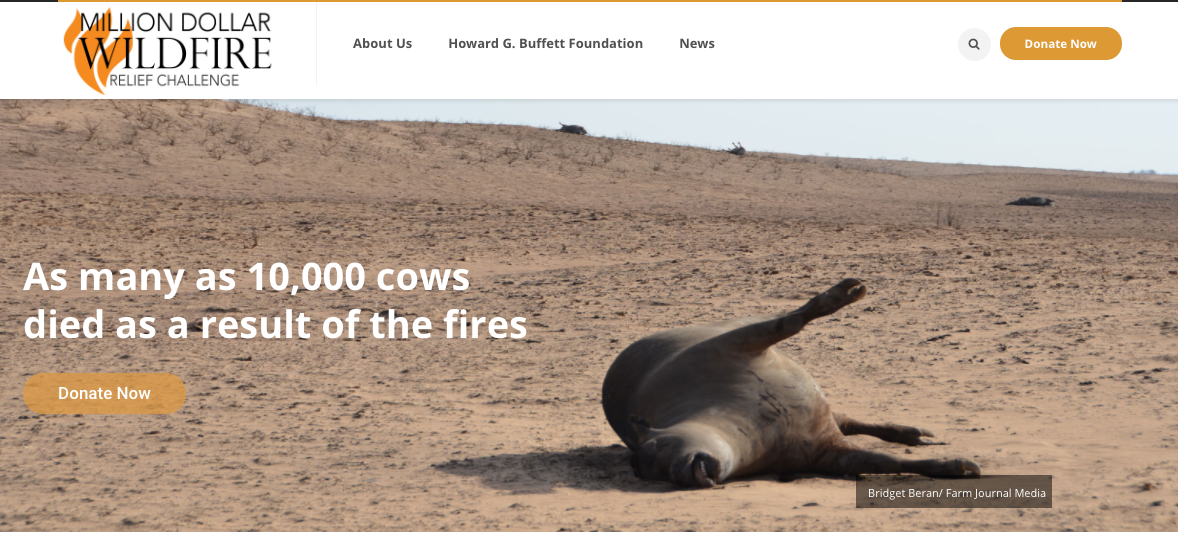- Home Page
-
Properties
-
Exclusive Properties
>
-
Sold Ranches
>
- Blanco County - 17 Acres
- Blanco County - 18 Acres
- Real County, TX 500 +/- Acres
- Blanco County - 35 acres
- Uvalde County - Frio 180
- Uvalde County - Frio 203
- Uvalde County - Nueces River 173
- Real County - Creek 463
- Real County - Frio - 1.44 Acres
- Real County - 21.5 Acres
- Sutton County - 519 acres
- Real County - Frio - 2.4 Acres
-
Exclusive Properties
>
- ABOUT
- Podcast
- Blog
- Ranch Services
|
These Ranchers and Farmers May Bend, But They Won’t Break The very heart and soul of America and what makes our country great has been on display in rural Kansas, Oklahoma, Texas, and Colorado since early March of this year. That’s when a massive series of wildfires swept through more than 1,000 square miles of ranchlands and farmlands, leaving devastation that to those on the ground must have appeared a lot like the blast of a nuclear bomb. “I’ve never seen anything like it. It was throwing fireballs. It was mean, ugly. It was loud,” Gena Kirk, owner of the Kirk Ranch in Clark County, Kansas, told Harvest Public Media. In Clark County alone, 85% of the land was scorched. The fire spread so rapidly, by some estimates consuming everything in its path at speeds of as much as 70 miles an hour, that ranchers had little opportunity to save any of their livestock and only by divine providence did all but seven people manage to save their own lives. “It burned every acre of the ranch. There’s not a blade of grass standing there,” third-generation rancher David Bouziden told CNN. Bouziden, who was plowing on his ranch in Southwest Kansas when the smoke from the fire engulfed him and sent him fleeing through soot and ash, was lucky to escape alive. However, he estimated that he lost 90% of his cattle. Greg Gardiner, co-owner of the Gardiner Angus Ranch, one of the most recognizable Angus breeders in America, lost 500 head of cattle on his family’s 48,000-acre ranch, where about 88% of his land burned. Gardiner, whose family’s ranching roots date back five generations to 1885, told Drovers that he had 6,000 round bales spread out over a five-mile distance in the hope of protecting them from any possible disaster; nonetheless all of them were consumed during the fire. In total, Gardiner estimated his ranch’s losses could reach $5 million to $10 million. Lessons Learned Gena Kirk drove through heavy smoke across a mile of pasture seeking an escape route. When her pickup truck got stuck in deep sand, Kirk ran the rest of the way scaling fences and navigating barbed wire before making it to the state highway. She was later treated at a local hospital for smoke inhalation. By the time the flames were finally doused, 23 Kansas counties had been impacted, as well as parts of northwestern Oklahoma, northeastern Colorado, and the panhandle of Texas. What helped contain the damage from being even more catastrophic – if you can imagine anything even worse – was the recovery experience area residents and officials gained just a year earlier when another enormous grass fire consumed more than 620 square miles of prairie and cattle grazing land in Oklahoma and Kansas. At the time, the Anderson Creek Fire was considered the worst wildfire in Kansas history. Neighbors Helping Neighbors More remarkable than the size and speed of the blaze – the largest in Kansas history – has been the resilience of the ranchers and farmers whose lives, possessions and legacies were left in ashes. Even while the worst of the wildfires, which some are calling the “Starbuck Fire,” was still consuming grassland, livestock, homes, pens, and fencing, men and women who lost everything were out volunteering to help others in the effort to save what they could for their neighbors. Kendal Kay is mayor of Ashland, Kansas, which with a population of 850 is the largest city in and the county seat of Clark County. Miraculously, Ashland is still standing, although the fire’s flames got within a half-mile of the town on almost all sides. Mayor Kay told reporter Amy Bickel of The Hutchinson News about one exhausted rancher, his home destroyed and almost all of his cattle dead, who showed up on Day Two of the fire wanting to know how he could help. “I have 50 employees that want to have jobs tomorrow,” Jeff Kay said. “I wasn’t leaving. I was out here with a wet gunny sack like back in the old days.” “They lose their home, their ranch burns, and they still try to figure out a way to help others,” the Mayor explains. That, he adds, is what living in a close-knit community in rural America is all about. Additional noteworthy incidents reported by The Hutchinson News, The New York Times, and others include:
Ad Astra Per Aspera Five days after the fires broke out, U.S. Senator Pat Roberts was on the scene in Southwest Kansas witnessing the devastation firsthand. Like so many, Senator Roberts was struck by the resilience and spirit of area ranchers and farmers. “All of those I met with today in Clark County are thankful the lives of their friends and families were spared,” the Senator said. “The Kansas spirit as embodied by our motto, ‘To the Stars Through Difficulty’ – Ad astra per aspera – is amazing.” Indeed, three weeks after the disaster struck his ranch, 71-year-old Bouziden, who lost his home and 90% of his cow herd, had two fencing crews re-fencing his land and was holding meetings with contractors about building a new home. Matt Wilson, whose family roots date back to the homesteading days of 1884, lost the family’s original 19th century home and a modern house where he, his wife, and their six children lived. The Wilsons, who did manage to rescue photos of his great-grandfather standing in front of the original family home, plan to rebuild and keep ranching. 18,000 miles of rural fencing were destroyed. At $10,000 per mile, replacement costs for fences alone will be in the range of $180 million. The final toll in terms of lost animal life, lost productivity, infrastructure damage, and destroyed inventories may never be fully tabulated. Among the high costs of the fires:
The tales of individual bravery, heroics, generosity, and selflessness coming out of the Starbuck Fire are inspirational and will endure long after the scars of the land have faded. The stories of survival, rescue, and recovery are vivid reminders that the ranches and farms of America rely on much more than land, seed, soil, feed, and water to prosper. At their very foundation is individual character and self-reliance. Mother nature does, at times, sweep away the visible assets of rural producers. But for all the fury she is capable of unleashing, as the Starbuck Fire once more illustrates, she cannot undermine the spirits of the men and women who in good times harvest her many bounties. How You Can Help It will take years, perhaps even decades, for the dedicated ranchers and farmers of Southwest Kansas and surrounding areas to fully rebuild and recover. They need our help and now, thanks to a matching grant from the Howard G. Buffett Foundation, every dollar donated to the wildfire relief fund will be matched through July 31, 2017. To learn more and make a much needed and appreciated donation, visit: http://www.wildfirerelieffund.org. All donations are tax-deductible. Attribution: In writing this article, I relied on coverage of the March 2017 wildfires primarily from these news and information sources:
0 Comments
Leave a Reply. |
Archives
October 2019
Categories |
- Home Page
-
Properties
-
Exclusive Properties
>
-
Sold Ranches
>
- Blanco County - 17 Acres
- Blanco County - 18 Acres
- Real County, TX 500 +/- Acres
- Blanco County - 35 acres
- Uvalde County - Frio 180
- Uvalde County - Frio 203
- Uvalde County - Nueces River 173
- Real County - Creek 463
- Real County - Frio - 1.44 Acres
- Real County - 21.5 Acres
- Sutton County - 519 acres
- Real County - Frio - 2.4 Acres
-
Exclusive Properties
>
- ABOUT
- Podcast
- Blog
- Ranch Services



 RSS Feed
RSS Feed
